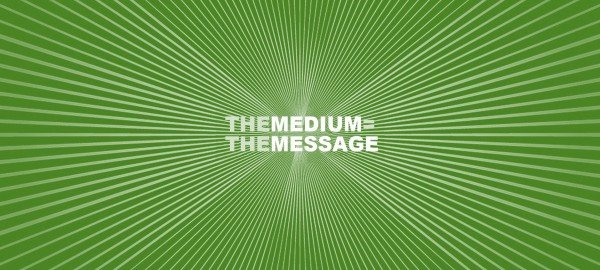
In the first of a two-part article, communications expert Sean Trainor examines the theory of the medium of communications and how that influences the effectiveness of our message around safety.
Effective internal communication is a critical success factor in changing behaviours and shifting the culture inside organisations, yet too often the value of communications is questioned and it is perceived as the soft and fluffy stuff. Internal communications is widely misunderstood and historically professional communicators haven’t always been effective at communicating their value, an irony that isn’t lost on me. In my experience, organisations struggle to get communications right the first time which costs more in the long term, especially when it comes to safety.
The soft stuff is the hard stuff
It is true to say that internal communications really isn’t rocket science – it is a social science which, in my experience, is much more complex than aeronautical engineering. It is also true to say that internal communications isn’t a dark art either but it does involve capturing the hearts and minds of people and there absolutely is an art to that, especially when applied to the very emotive subject of personal safety.
To help demystify the art and science of internal communications we can deconstruct it into five key considerations:
- Purpose – Why do you want to communicate and what outcomes are you trying to achieve?
- Stakeholders – Who cares about your outcome and who is influential, what’s in it for them?
- Message – What do you want each of your stakeholders to think, feel and do?
- Evaluation – Where are you against your goals, how effective is your approach?
- Medium – How do you want to convey the message, what are the most effective channels?
The most significant change to workforce safety communications over the past 100 years has been the proliferation of media, which places the use of the medium at the very heart of the art and science of modern internal communications theory and practice.
This article explores the theory of the medium of communication from the work of Marshall McLuhan, known for coining the expression “the medium is the message” and for predicting the World Wide Web almost thirty years before it was invented.
Putting theory into practice, it looks at safety communications in the British rail industry which initiated the ‘Safety Movement’ in 1913, changing the way Britain tried to prevent accidental deaths and injuries through the use of media and how it continues to innovate in safety communications today.
The medium is the message
“The medium is the message” is a pithy, controversial and simple expression which is based on McLuhan’s belief that the medium of communication as an environmental factor has a larger influence over culture and how humans think, feel and act, than the message or the content that it conveys. This belief is a fundamental consideration when developing an internal communications strategy for changing behaviours and the culture in an organisation.
On a very simple, single transactional level of giving bad news, we can all appreciate this is better delivered face-to-face rather than via Facebook, yet we still hear stories of workers being made redundant by text message. These dumb decisions are bad enough for those directly impacted but have wider implications on reputation. If managers are getting the basics wrong in a very simple, singular transaction like giving bad news, they are even more likely to screw it up on without expert help on the use of media on more complex, ongoing communications around safety culture.
Hot media can be cool
McLuhan characterised media on a continuum of hot to cool depending on the level of definition and degrees of participation required. Some media, such as radio, is said to be “hot” and “high definition”, emphasising one sense (i.e. sound) over others and demanding a listener’s attention and complete involvement. Other media, like television, is said to be “cool” and “low definition”, providing substantial stimulus and requiring much more active participation on the part of viewer to determine meaning.
Without the first televised presidential debate John F Kennedy would never have been president. As the story goes, those who listened to the debate on the radio thought Nixon had won and those that watched the debate on TV thought Kennedy was the clear winner. With the number of TV viewers estimated as high as 74 million, radio listeners were in the minority. The rest, as they say, is history. We can learn from this and the history of safety communications in the British rail industry over the past century to optimise the use of the medium of safety communication.
The second part of Sean’s article covering the history of communicating a ‘Safety Movement’ in the British rail industry will be published next week.
 Sean Trainor championed behavioural safety in the early 1990s in the nuclear industry as a manufacturing plant manager which led to 90 per cent improvements in safety performance in one year while achieving record levels of productivity. An epiphany moment that led to him specialising in employee engagement and change communications. He has led on high-profile communications for safety critical organisations including BNFL, Network Rail, British Gas and Balfour Beatty over the past 15 years. He’s the founder of Safe Places To Work, a social enterprise to promote safe cultures as lead indicators of sustainable business performance.
Sean Trainor championed behavioural safety in the early 1990s in the nuclear industry as a manufacturing plant manager which led to 90 per cent improvements in safety performance in one year while achieving record levels of productivity. An epiphany moment that led to him specialising in employee engagement and change communications. He has led on high-profile communications for safety critical organisations including BNFL, Network Rail, British Gas and Balfour Beatty over the past 15 years. He’s the founder of Safe Places To Work, a social enterprise to promote safe cultures as lead indicators of sustainable business performance.
The Safety Conversation Podcast: Listen now!
The Safety Conversation with SHP (previously the Safety and Health Podcast) aims to bring you the latest news, insights and legislation updates in the form of interviews, discussions and panel debates from leading figures within the profession.
Find us on Apple Podcasts, Spotify and Google Podcasts, subscribe and join the conversation today!



